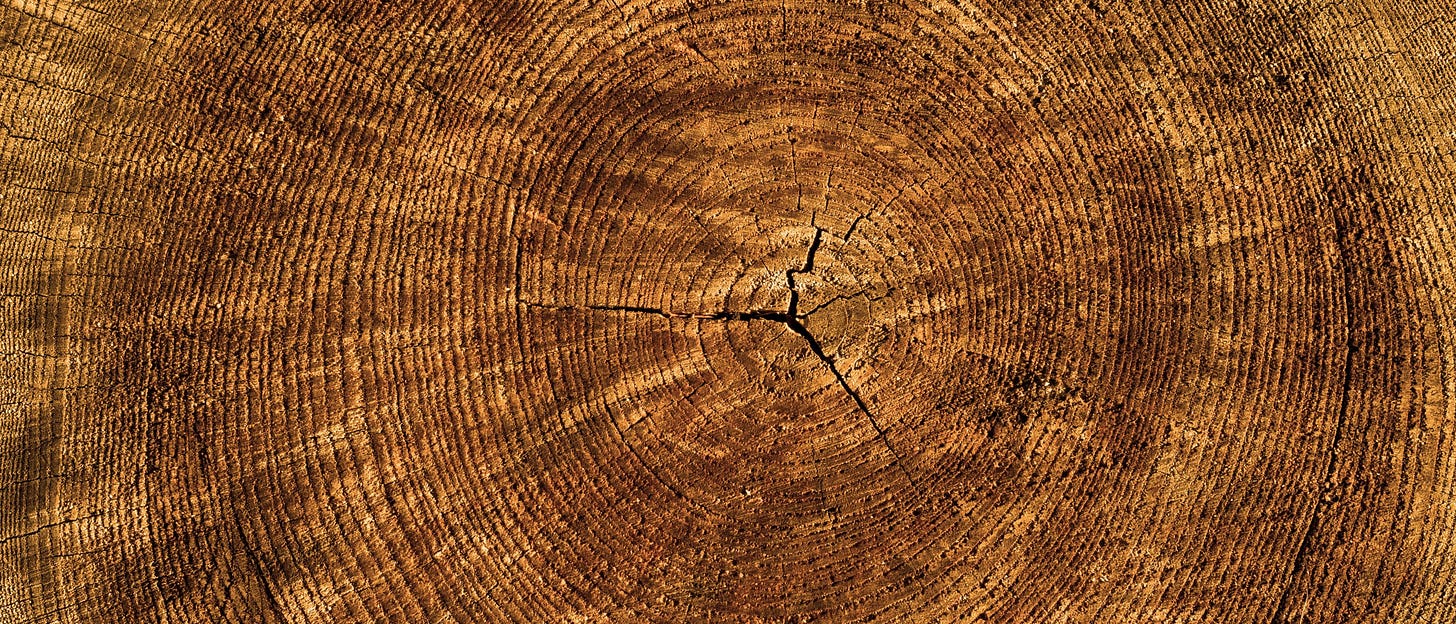The concept of time is great for talking about the limits of the human brain, for a fairly simple reason — we are basically incapable of talking about it directly.
Any real discussion of time necessitates a conceptual metaphor, usually to something spatial. So, if we always have to go through a metaphorical lense to understand the nature of time, none of those metaphorical lenses is really wrong or right since they are never the thing; they can only be judged as more or less useful with regard to your purposes. So why not try on some new ones.
〰️〰️👁️〰️〰️
A common but under-appreciated conceptual metaphor is something often called the ‘matryoshka principle’ or the ‘onion metaphor’ — both names I don’t particularly like because they have associated smells I’m not always in the mood for.
Both the matryoshka and the onion are examples of a spatial concept of nested layers. Layers that fit inside of each other, with any given layer containing all of the smaller layers, and hypothetically capable of being engulfed by a subsequent larger layer. I’m going to just call this conceptual metaphor nested shells.
We already use different versions of the nested shell metaphor for lots of complex structures, the most obvious of which being the self. Shrek says “ogres are like onions", having layers, but humans in many cultural contexts have tended to think of themselves in much the same way.
For example, Vedantic philosophy conceptualizes the ‘self’ or ‘subtle body’ through the concept of कोश koshas, literally ‘sheaths’. These aspects move inward in increasing levels of subtlety or interiority, from the gross physical body, to the energy or prana body, to the sheath of the ‘mind body’, to the body of ‘intellect’ or vijñāna विज्ञान, down to the ‘bliss body’, which is itself the innermost sheath around ātman आत्मन, the eternal self or soul.
On the other side of the world, the Enxet shamans of Paraguay describe a person as being constituted by a number of wanmagko, ‘dreaming spirits’, or literally ‘silences’. These spiritual reflections of a person, of which there are an indeterminate number around 10 or 12, are graded in size from smallest to largest, with the largest an exact likeness of the physical body of the person, and each subsequently smaller one becoming less sharp, defined, and identifiable.
Even a number of concepts in modern western psychology draw on a similar concept of metonymic personages that make up the individual self, even if they aren’t entirely iterative in the model of the matryoshka doll. Freud’s id, ego, and superego are conceived of as distinct, interacting agents. The inner child is a self-contained personage within the large psyche of the present person.
The inner child concept is perhaps a good bridge to understanding what it would mean to conceive of time as nested shells, as a matryoshka doll. Because with the model of the inner child, we have the past contained within the present. And this, similarly, is true of our understanding of time in the context of the material university: the present is always the sum total of all past conditions, stretching back to the beginning of the universe.
We have a primary spatial concept for time as a directional arrow because of the nature of our motion through space as walking animals, bodies with a fore and aft, front and rear. Our physical movement through space occurs in tandem with and as a function of the progress of time, and that motion has directionality.
But.
I once asked an Enxet shaman yetneya yámet élwanmagko?, ‘do trees have dreaming spirits?’. Yetneyk, they do.
So then I ask, how would a tree think about time? Not as forward motion, but as growth out from the center. The past, for a dreaming tree, would not be the rear in her path of motion, but the center of her trunk.
There are a number of implications of using the nested shells spatial metaphor for time. But the primary implication is the notion of containment.
The present is no longer flanked on both sides by past and future. Rather, the present contains the past in its entirety. The present is the outer shell, the observable face of all that has occured. It is no longer ephemeral; it has weight.









